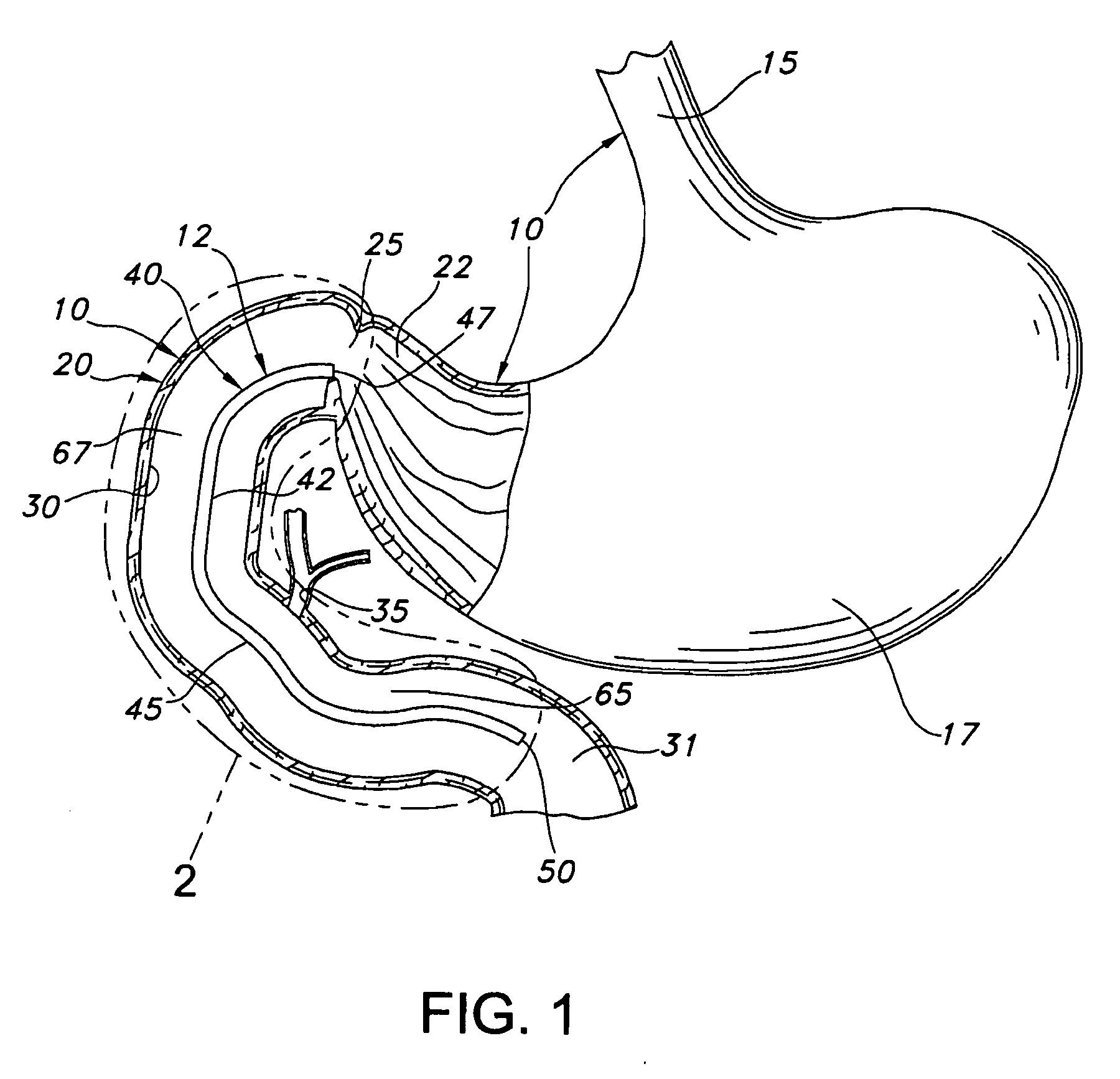Anti-obesity diverter structure
a diverter and anti-obesity technology, applied in the field of anti-obesity implants, can solve the problems of increasing the incidence of obesity and its associated health-related problems, reducing the effect of weight loss, and reducing the economic cost of obesity, so as to reduce or prevent the mixing of chyme and digestive fluid, reduce or prevent the effect of digestive fluid mixing
- Summary
- Abstract
- Description
- Claims
- Application Information
AI Technical Summary
Benefits of technology
Problems solved by technology
Method used
Image
Examples
Embodiment Construction
[0022]Referring to the drawings and more particularly to FIG. 1, a central portion of the alimentary canal 10 in which the anti-obesity diverter structure 12 is located is illustrated. This portion of the alimentary canal 10 includes the distal segment of the esophagus 15, the stomach 17, and the duodenum 20. The duodenum 20 is the proximate segment of the small intestine. The stomach 17 has a pyloric portion 22 which leads to the duodenum 20 by way of the gastric outlet or pylorus 25. The pylorus 25 forms the distal aperture of the stomach and has an enclosing circular layer of muscle which is normally contracted to close the aperture but which relaxes to provide an open but restrictive passage. Although subject to substantial variation in different individuals, the pylorus 25 has a maximum open diameter of about 2 cm and the duodenum 20 has a diameter which typically is about 18 to 20 mm in a representative patient. The chyme 27 passes from the pyloric portion 22 through the pylor...
PUM
 Login to View More
Login to View More Abstract
Description
Claims
Application Information
 Login to View More
Login to View More - R&D
- Intellectual Property
- Life Sciences
- Materials
- Tech Scout
- Unparalleled Data Quality
- Higher Quality Content
- 60% Fewer Hallucinations
Browse by: Latest US Patents, China's latest patents, Technical Efficacy Thesaurus, Application Domain, Technology Topic, Popular Technical Reports.
© 2025 PatSnap. All rights reserved.Legal|Privacy policy|Modern Slavery Act Transparency Statement|Sitemap|About US| Contact US: help@patsnap.com



